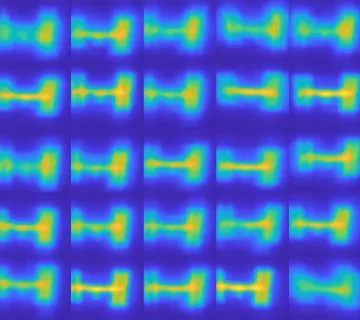Another Wavelength: Ryan Hamilton

his month in Another Wavelength, we chat with Ph.D. Student Ryan Hamilton. Ryan is currently mentored by Michael Hart.
Where are you from?
Born and raised in Tucson! As were both of my parents.
What brought you to study optics?
I came into college looking to do some sort of engineering and something to do with space. Those vague goals began when I wrote a paper about the James Webb Space Telescope in my high school physics class. I ended up at the U of A without even knowing it had one of the most renowned optical sciences programs that would easily enable me to meet both of my goals. I attended an informational presentation run by Dr. Mike freshman year of Undergrad, after which I signed up for the Optics undergraduate program and haven’t looked back since.
Who is your hero in science?
I’ve never had a specific hero in science I don’t think. I certainly owe a lot of credit for my formative interest in science and engineering to people like Bill Nye and the MythBusters team. I think all of those people do an essential job in inspiring children to take interest in science and I cannot be more appreciative of what they do. As an adult the people who formed a lot of the fundamentals that I use all of the time – Fourier, Fresnel, Gauss, Einstein, Kolmogorov, Fried, Dirac, etc… - are all my hero by proxy! I find it incredible that they did all that they did before they had the digital tools we use all the time.
Describe your research in 20 words or fewer.
A computer simulation of a Shack-Hartmann wave-front sensor that performs tomography of turbulent atmosphere over a large field of view.
Describe your research in 200 words or fewer.

When you want to capture light signals from objects that are distant and obscured by the atmosphere, turbulence distorts the signal. Adaptive optics (AO) is a correction technique for fixing the distortions in the signal by measuring errors with a wave-front sensor (WFS) and then undoing them with a correcting optic before it reaches the detector.
My research focuses on using the WFS to a much higher capacity such that the correcting optic, which is generally expensive and difficult to make, is not needed in specific applications. The undistorting optic has the ability to offload computational requirements for correcting the atmosphere to mechanical requirements. This was essential when AO was getting started 30-40 years ago, but computers are becoming faster and less expensive every year.
A WFS alone is theoretically capable of generating a tomographically reconstructed real-time volumetric model of turbulence in the atmosphere. With a model continuously updated to reflect changing atmospheric statistics, real-time turbulence correction could be possible over a much larger field at a much smaller price tag than can be offered by traditional AO systems with an undistorting optic. My current work is to simulate such a system to determine the practicality and extent of this software-based AO approach.
Name three neat facts about you.
- Music has been a huge part of my life and is my biggest hobby. I played several brass instruments growing up, marching bass drum and marching snare drum in the high school band, I’ve played drum set for 12 years, and recently picked up electric bass to expand my understanding of music theory. I write music for fun with a friend and colleague here at Optical Sciences and have recently started to scratch the surface on how people record and produce music with a small home studio.
- I love the mountains. It’s a little bit bittersweet since I’m a desert rat with bad cold tolerance, but there are few things as satisfying as hiking or climbing in the mountains on a cool, crisp morning. I spent two summers interning in Boulder, CO, which really helped nurture my appreciation of the mountains. I’m thankful to live close enough to the Catalinas to be able to escape up there when a window of time presents itself.
- I’ve recently started a garden with my partner. I grew up in a family with a history of gardeners and it’s been fun to think of carrying on the tradition myself. We’ll see how it goes…
Research Caption: Shack-Hartmann WFS image of the ISS obscured by strong atmospheric turbulence

Image Caption: Ryan on a ridge to the summit of Quandary Peak in Summit County, CO
